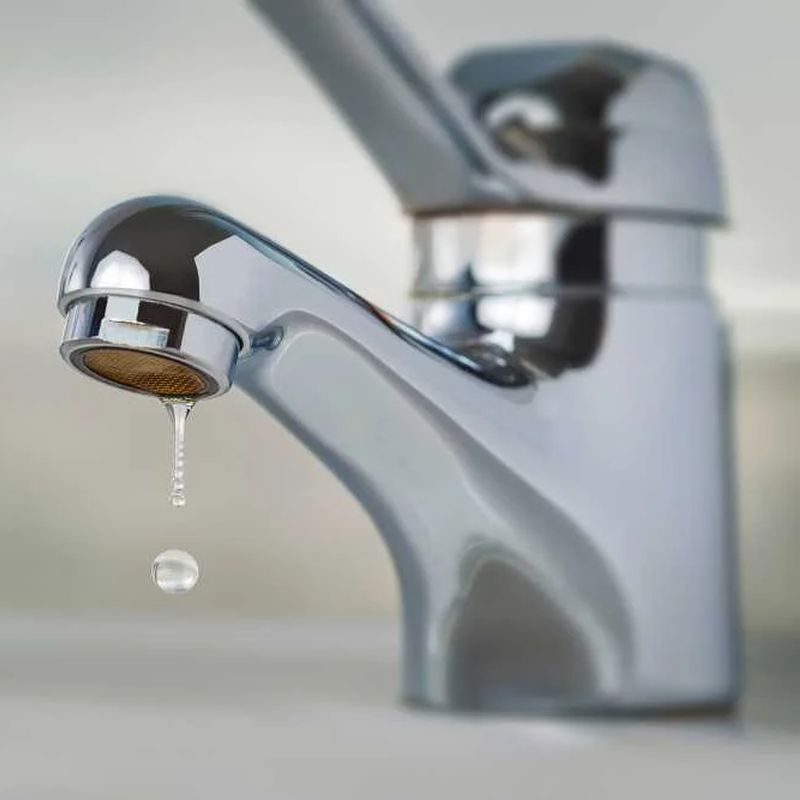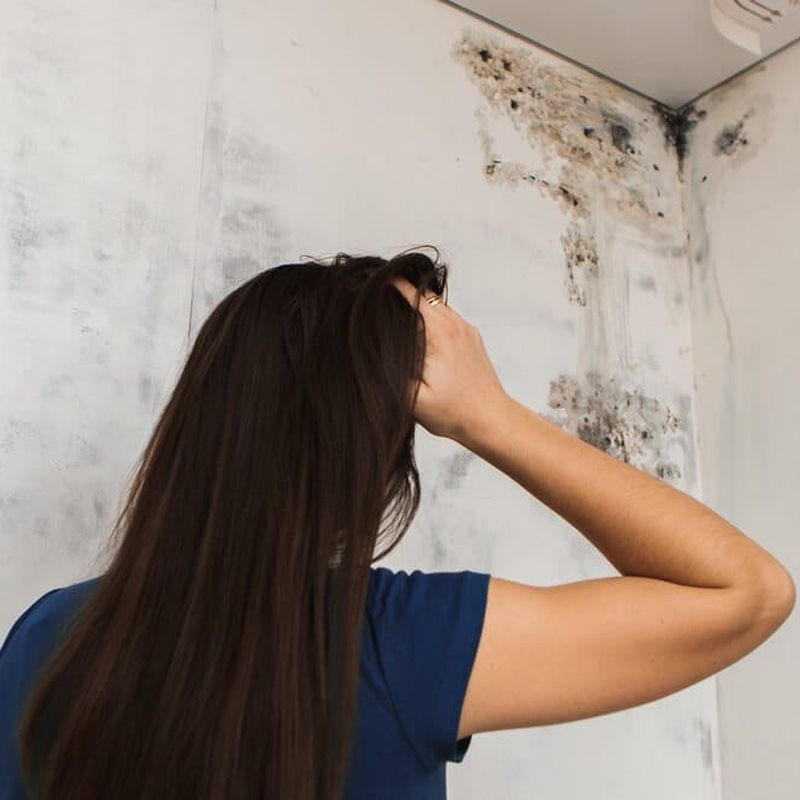 English
English
Jabra Sanitary is a sanitaryware supplier offering toilets, sinks, faucets, bathtubs, etc., at competitive prices. If you're a distributor, wholesaler, or project contractor, get a quote today!
 $23.9 Limited-time Offer
$23.9 Limited-time Offer Consignment Policy
Consignment Policy 20 Years of Experience
20 Years of Experience
Imagine this: we're unwinding in a warm bath after a hectic day, but the steady drip-drip-drip from our bathtub faucet is testing our patience. Or maybe we've just settled into a new home, and the old, rusty faucet in the bathroom sticks out like a sore thumb.
Whatever the case, replacing a bathtub faucet is a practical fix we've all considered at some point. We get it—before jumping into any home project, we want to know what we're signing up for, especially when it comes to cost. Replacing a bathtub faucet might sound simple, but the price can swing quite a bit depending on a few key details.
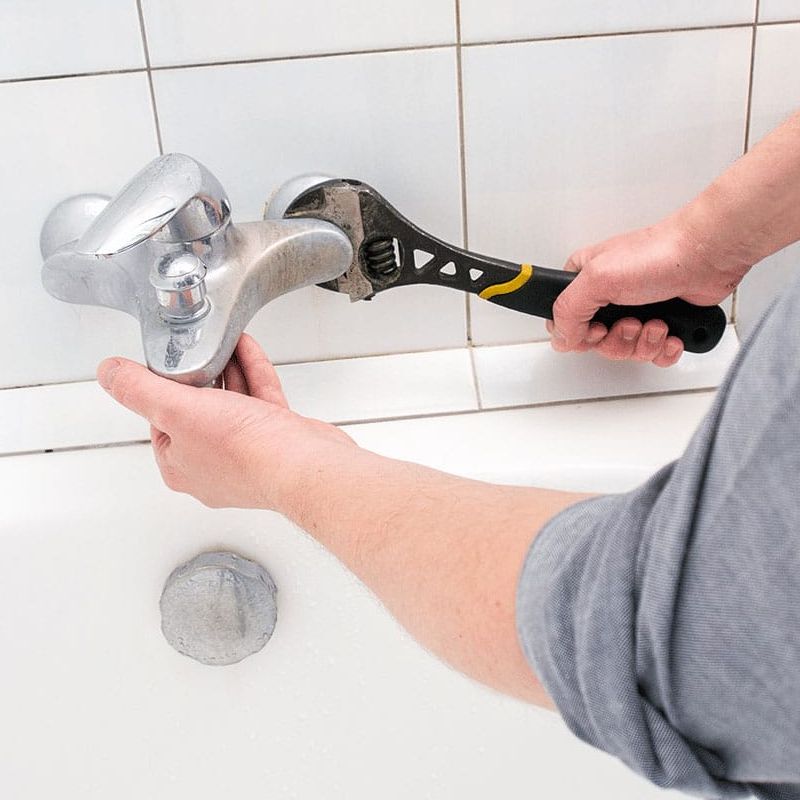
Table of Contents
Average Cost to Replace a Bathtub Faucet
Factors Affecting Bathtub Faucet Replacement Cost
DIY vs. Hiring a Professional Plumber for Faucet Replacement
Breakdown of Labor and Material Costs
Types and Brands of Bathtub Faucets: Cost and Longevity
Tips to Save Money on Bathtub Faucet Replacement
When is It Time to Replace Your Bathtub Faucet?
FAQs
Conclusion
Average Cost to Replace a Bathtub Faucet
When planning to replace a bathtub faucet, knowing the average cost helps set a realistic budget. The typical cost for this project ranges from $180 to $1,000, with most homeowners spending between $350 and $550.
This price generally includes the faucet itself, professional labor, and essential materials like plumber's tape or new supply lines.
Let's break it down.
For a basic replacement with a standard faucet, costs tend to stay on the lower end, around $180 to $350.
If you choose a premium faucet or the job involves extra plumbing work—like rerouting pipes or fixing underlying issues—the price can rise to $550 to $1,000 or more.
To give you a better idea, here are some average costs from reliable sources:
- HomeAdvisor: Averages $350, with a range of $180 to $1,000.
- HomeWyse: Estimates $848 to $1,244, possibly reflecting more complex jobs or regional pricing differences.
- Jabra Sanitary: Suggests a national average of $450 to $550, with luxury replacements reaching up to $2,000.
Factors Affecting Bathtub Faucet Replacement Cost
When it comes to replacing a bathtub faucet, the final cost can vary quite a bit depending on several key factors. Understanding these can help you budget more accurately and avoid any surprises along the way.
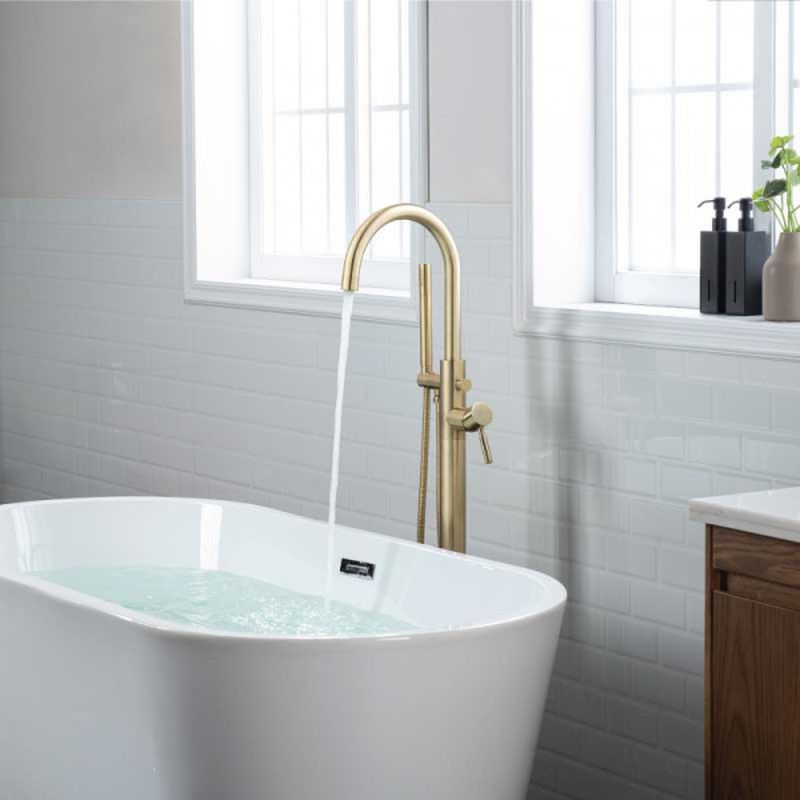
Complexity of the Job
The complexity of the installation is one of the biggest factors affecting cost. Simply put, the harder the job, the more you'll likely pay. Here's why:
Simple installations: If your faucet is easy to access and the plumbing setup is straightforward, the job is less complex. For example, replacing a standard faucet with a similar model usually falls into this category.
Complex installations: If the faucet is in a tight spot (like behind a built-in tub) or if the plumbing needs adjustments—such as rerouting pipes or fixing leaks—the job becomes more complicated. These situations often require extra time and expertise, pushing costs up to $550 or more.
Type and Brand of Faucet
The faucet you choose has a big impact on the overall cost. Here's how:
Type of faucet: There are different styles, like single-handle, double-handle, or even modern touchless faucets. Each has its own installation requirements.
For example:
- Single-handle faucets are usually simpler to install and cost less.
- Double-handle or widespread faucets might need more precise alignment, which can increase labor time.
- Freestanding or wall-mounted faucets often require additional plumbing work, making them pricier to install.
- Brand and quality: Well-known brands like Moen, Kohler, or Delta tend to be more expensive but often come with better warranties and durability.
Condition of Existing Plumbing
The state of your current plumbing can make or break the budget. Here's what to consider:
Good condition: If your pipes are in solid shape and the water shutoff valves work properly, the replacement should be straightforward. This keeps costs on the lower end.
Poor condition: If there's corrosion, leaks, or outdated plumbing, you might need repairs or upgrades before installing the new faucet. For example, replacing old pipes or fixing a faulty valve can add $100 to $500 or more to the project, depending on the extent of the work.
Location
Where you live can also affect the cost of replacing a bathtub faucet. Labor and material prices vary based on your region:
Urban areas: Cities with a higher cost of living, like New York or San Francisco, often have higher labor rates. Plumbers might charge $100 to $150 per hour or more.
Rural areas: In smaller towns or less populated regions, labor costs tend to be lower, sometimes as little as $50 to $75 per hour.
Additionally, if you live in an area with limited plumber availability, you might face higher fees due to demand. For example, Badeloft notes that costs can be $200 to $300 higher in places like California compared to other states.
Emergency or Same-Day Service
Sometimes, you need a faucet replaced right away—maybe there's a major leak or you're hosting guests soon. In these cases, emergency or same-day service can come with a premium:
Standard service: Most plumbers charge their regular rates for scheduled appointments, which keeps costs within the average range.
Emergency service: If you need immediate help, especially outside normal business hours, plumbers often add a surcharge. This can increase the total cost by 20% to 50% or more, depending on the plumber and the time of day.
DIY vs. Hiring a Professional Plumber for Faucet Replacement
When it comes to replacing your bathtub faucet, you have two main options: do it yourself or hire a professional plumber. Each choice has its own set of advantages and challenges, and the best one for you depends on your skills, budget, and the complexity of the job.
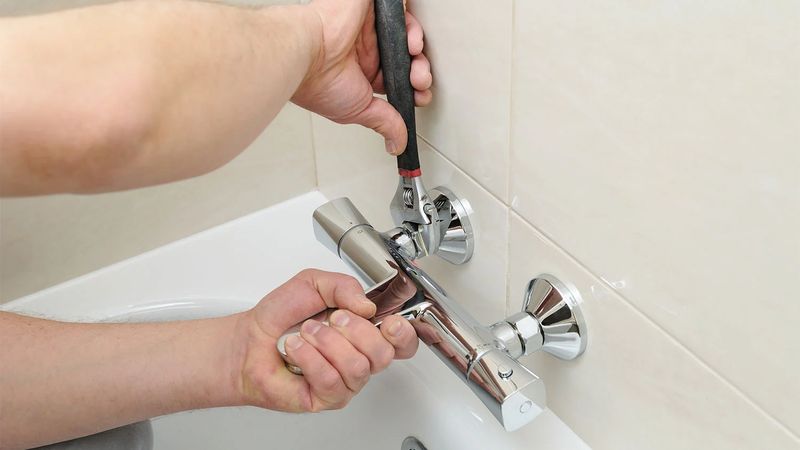
DIY: Replacing the Faucet Yourself
Pros of DIY:
- Cost savings: You only pay for the faucet and any necessary materials, potentially saving hundreds of dollars. For example, if the faucet costs $150, your total expense might stay under $200, compared to $350 or more with a plumber.
- Sense of accomplishment: Completing a home improvement project can be very satisfying.
- Flexibility: You can work on your schedule without waiting for a plumber's availability.
Cons of DIY:
- Requires plumbing knowledge: If you're not familiar with plumbing, you might make mistakes that could lead to leaks or damage.
- Risk of mistakes: Incorrect installation can cause water damage or require costly repairs. For instance, if you don't tighten connections properly, you could end up with a leak that damages your bathroom floor.
- Time-consuming: Even a simple replacement can take several hours, and more complex jobs might take a full day or more.
If you decide to go the DIY route, here are some tips to help you succeed:
- Watch tutorial videos or read guides: Familiarize yourself with the process before starting. There are plenty of step-by-step resources online.
- Gather the right tools: You'll need wrenches, a plumber's tape, and possibly a basin wrench for tight spaces.
- Turn off the water supply: Always shut off the water before beginning to avoid flooding.
- Be prepared for surprises: Old faucets might be corroded or stuck, requiring extra effort to remove. You might need penetrating oil or a hammer to loosen them.
- Have a backup plan: Know a local plumber you can call if you run into trouble. It's better to have help lined up just in case.
Hiring a Professional Plumber
Pros of Hiring a Pro:
- Expertise: Plumbers have the skills and experience to handle any issues that arise, such as corroded pipes or tricky installations.
- Warranty: Many plumbers offer a warranty on their work, providing added protection. This means if something goes wrong after the installation, they'll fix it at no extra cost.
- Faster completion: A professional can usually finish the job more quickly than a DIYer, often in just a couple of hours.
Cons of Hiring a Pro:
- Higher cost: Labor fees can add $100 to $500 or more to the total expense, depending on the complexity of the job and the plumber's rates.
- Scheduling: You might have to wait for an appointment, especially during busy seasons like holidays or weekends.
If you choose to hire a professional, consider these tips:
- Get multiple quotes: Compare prices from at least three plumbers to find the best deal. This can help you avoid overpaying.
- Check reviews and recommendations: Look for a plumber with a good reputation and positive feedback from previous customers.
- Verify licenses and insurance: Ensure the plumber is qualified and covered in case of accidents. This protects you from liability if something goes wrong.
- Ask about warranties: Find out if the plumber offers a guarantee on their work. A warranty can give you peace of mind and save you money in the long run.
Breakdown of Labor and Material Costs
When planning to replace a bathtub faucet, it's helpful to understand how the total cost breaks down. This way, you can budget more accurately and avoid any surprises.
Faucet Price
The cost of the faucet itself can vary widely, depending on the brand, type, and features you choose.
- Basic models: These start as low as $50 and are great if you're on a tight budget or just need a simple replacement.
- Mid-range faucets: Most homeowners opt for faucets priced between $100 and $300. These offer a good balance of quality, style, and durability.
- High-end faucets: Premium brands like Kohler or Moen can cost $1,000 or more, especially if they have advanced features like touchless operation or special finishes.
Labor Costs
Labor is often the largest part of the total expense, and it can vary based on the complexity of the job and the plumber's rates.
- Simple replacements: If the faucet is easy to access and no extra plumbing work is needed, labor might cost around $100 to $150.
- More complex jobs: If the plumber has to work in tight spaces, reroute pipes, or deal with old, corroded parts, labor can rise to $350 to $500 or more.
Materials and Supplies
In addition to the faucet, you might need some extra materials for the installation. These are usually inexpensive but still part of the overall cost. Common items include:
- Plumber's tape (to prevent leaks)
- New supply lines (if the old ones are worn out)
- A basin wrench (for tight spaces)
These supplies typically cost between $10 and $50 in total. If you're hiring a plumber, they often bring these materials with them, and the cost is included in their fee. If you're doing it yourself, you'll need to buy them separately.
Disposal Fees
Sometimes, there's a small fee for removing and disposing of the old faucet.
- Included in labor: Many plumbers don't charge extra for this and include it in their overall labor cost.
- Separate charge: If there is a separate fee, it's usually around $20 to $50.
To give you a clearer picture, here's a table with low, average, and high estimates for each category:
Cost Category |
Low Estimate |
Average Range |
High Estimate |
|---|---|---|---|
Faucet |
$50 |
$100 - $300 |
$1,000+ |
Labor |
$100 |
$150 - $350 |
$500+ |
Materials |
$10 |
$20 - $40 |
$50 |
Disposal |
$0 |
$20 - $50 |
$50 |
Total |
$160 |
$290 - $740 |
$1,600+ |
Types and Brands of Bathtub Faucets: Cost and Longevity
Choosing the right bathtub faucet isn't just about how it looks—it's also about how long it will last and what it will cost you upfront. Different types of faucets come with their price tags and durability, and the brand you pick can make a big difference too.
Types of Bathtub Faucets
There are a few main types of bathtub faucets, and each has its style, installation needs, and price range. Here's a quick look at the most common options:
Single-handle faucets: Since they have fewer parts, they can be more affordable, usually costing between $50 and $200. They're also less likely to leak over time, which can make them a durable choice.
Double-handle faucets: Prices for double-handle faucets typically range from $100 to $400, depending on the design and brand.
Touchless or sensor faucets: They're the most expensive, with prices starting at $300 and going up to $1,000 or more. They might also need more maintenance over time because of their electronic parts.
Popular Brands and Their Costs
The brand you choose can affect both the cost and the quality of your faucet. Here's a closer look at three well-known brands: Moen, Kohler, and Jabra Sanitary.
Moen: Known for reliability and a wide range of styles, Moen is a trusted name in faucets. Their prices vary a lot, from budget-friendly options around $100 to high-end models that can cost $1,800 or more. Moen faucets are often praised for their durability, and many come with a lifetime warranty, which can give you peace of mind.
Kohler: If you're looking for something stylish, Kohler is a great choice. Their faucets are known for unique designs and high-quality finishes. Prices start at about $275 and can go up to $1,700 for premium models. Kohler faucets are built to last, and they often include features like anti-scald technology for added safety.
Jabra Sanitary: This brand offers a good balance of quality and affordability, making it a popular choice for budget-conscious homeowners. Their faucets typically cost between $210 and $270, and they're known for being durable and easy to install.
Here's a quick comparison of the brands:
Brand |
Price Range |
Key Features |
Warranty |
|---|---|---|---|
Moen |
$100 - $1,800 |
Reliable, wide variety, lifetime warranty |
Lifetime |
Kohler |
$275 - $1,700 |
Stylish designs, anti-scald technology |
Limited lifetime |
Jabra Sanitary |
$210 - $270 |
Affordable, durable, easy to install |
Varies by model |
Longevity: How Long Will Your Faucet Last?
- When investing in a new faucet, you want to know how long it will last. While there's no exact lifespan for every faucet, here are some general guidelines based on the type and brand:
- Single-handle faucets: These can last 10 to 15 years with proper care. Since they have fewer moving parts, there's less that can go wrong.
- Double-handle faucets: These might need more maintenance because of the extra handles and washers. With regular upkeep, they can last 8 to 12 years.
- Touchless faucets: Because they have electronic components, they might need repairs sooner, typically lasting 5 to 10 years.
The brand also plays a role in longevity. Higher-end brands like Moen and Kohler often use better materials, such as solid brass, which resists corrosion and lasts longer.
Cheaper faucets might use plastic parts that wear out faster. Additionally, faucets with good warranties, like Moen's lifetime warranty, can save you money in the long run if something goes wrong.
Tips to Save Money on Bathtub Faucet Replacement
Replacing a bathtub faucet doesn't have to drain your wallet. With some planning and smart decisions, you can cut costs while still getting a quality result.
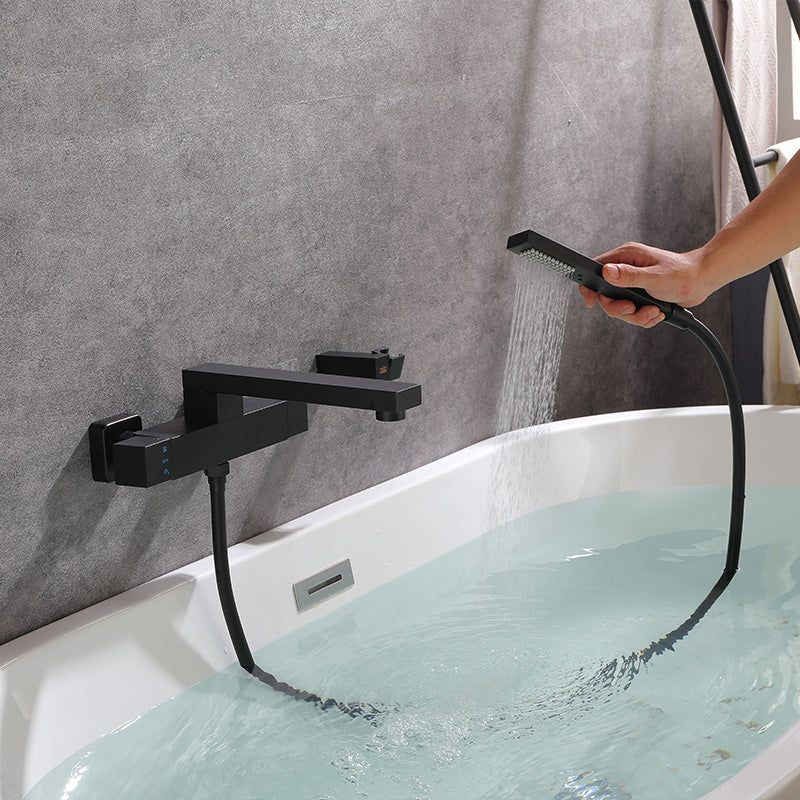
Opt for a DIY Replacement
Doing it yourself is one of the best ways to save. If you've got basic plumbing skills, replacing a bathtub faucet can be straightforward. Tons of free online tutorials and guides can boost your confidence before you start. Just be honest about your skills.
Choose Durable, Reliable Faucet Brands
Spending a little more upfront on a quality faucet pays off over time. Brands like Moen, Kohler, and Jabra Sanitary are built to last, reducing the need for future fixes.
Get Multiple Quotes from Local Plumbers
Not doing it yourself? Don't jump at the first plumber's price. Contact at least three local pros and compare their quotes. Prices can vary widely—one might charge $200 for labor while another asks $350 for the same job. This quick step helps you snag the best deal and avoid overpaying.
Avoid Emergency or Same-Day Service
Emergency or after-hours services often tack on hefty fees—sometimes 20% to 50% more than standard rates. A $350 job could balloon to $525 if you need it done fast. Unless water's gushing everywhere, plan the replacement ahead of time.
Plan for Replacement During Regular Home Maintenance
Tie your faucet replacement into routine upkeep for extra savings. If you're already fixing a pipe or upgrading your shower, add the faucet to the list. Plumbers often cut deals for multiple tasks, and you'll dodge extra service fees.
When is It Time to Replace Your Bathtub Faucet?
Wondering if it's time to say goodbye to your bathtub faucet? We've all been there—trying to decide if a little drip or a rusty handle is worth the hassle of a replacement.
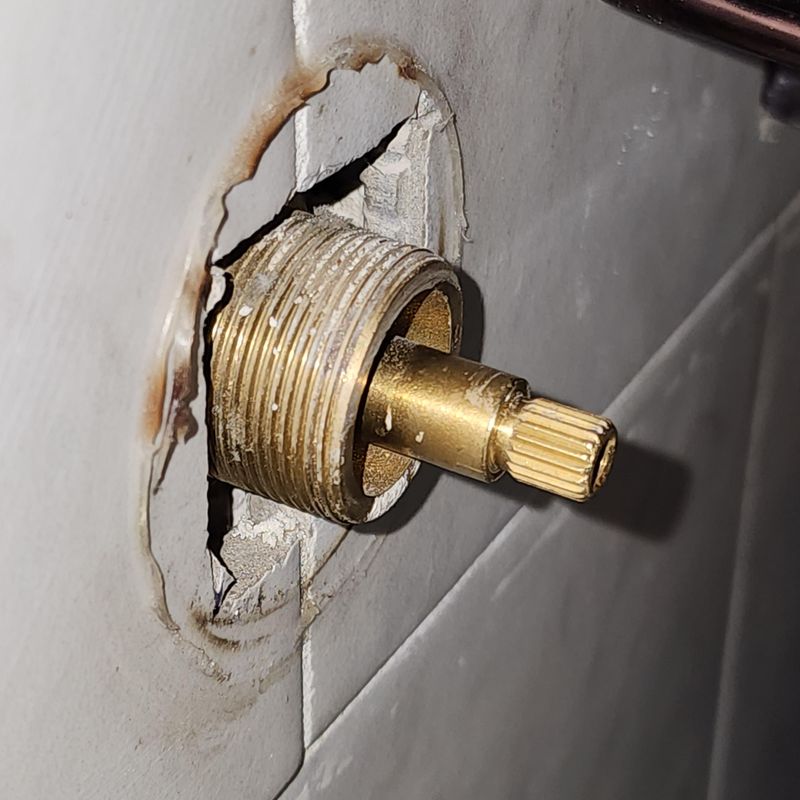
Clear Signs Your Faucet Needs Replacing
1. Visible Wear and Tear
If your faucet is sporting rust, corrosion, or chipped finishes, it's more than just an eyesore. These issues can weaken the faucet over time, leading to leaks or even a complete breakdown. Worn-out appearances often signal deeper functional problems—don't ignore the rust!
2. Persistent Leaks
Do you have a drip that won't quit, even after tightening things up or swapping out a washer? Persistent leaks are a classic sign that your faucet's internal components are failing. Not only do they waste water (and money), but they also suggest it's time for a new fixture to stop the drip for good.
3. Difficulty Operating the Faucet
Does turning the handle feel like a chore? Or maybe the water flow is all over the place—trickling one minute, gushing the next.
When your faucet gets stiff, squeaky, or inconsistent, it's likely due to worn parts or mineral buildup. If quick fixes don't solve it, replacement might be your best bet.
4. Outdated Design
Even if it still works, an old-fashioned faucet can make your whole bathroom feel dated. Upgrading to a modern style is a simple, affordable way to boost your space's look and even its value.
5. Frequent Repairs
Are you patching up your faucet more often than you'd like? If repairs are becoming a regular thing, it's a sign that your faucet is nearing the end of its lifespan. At some point, the cost of fixing it over and over outweighs the price of a new one.
FAQs
When it comes to replacing a bathtub faucet, we know you might have some questions.
How long do bathtub valves last?
On average, they can keep working well for 10 to 20 years. How long they last depends on a few things, like how often you use them and the quality of your water.
If we take good care of them with regular maintenance—like checking for leaks or buildup—they can even last longer.
How long does a bathtub spout last?
It usually lasts around 10 to 15 years. We've noticed that higher-quality spouts tend to hold up better, but maintenance makes a big difference too.
How to know if a tub cartridge is bad?
You might notice leaks around the handle, or maybe the faucet is hard to turn on and off. Another clue is if the water temperature swings from hot to cold without you adjusting it.
How much does it cost to replace a bathtub diverter?
We've found that the cost for a new diverter part typically ranges from $50 to $150. If we call in a professional plumber, labor could add another $100 to $200 to the bill.
How long does it take to replace a bathtub faucet?
If we hire a professional, they can usually get it done in 1 to 2 hours. But if we decide to tackle it ourselves, it might take a bit longer, especially if we're new to DIY projects. Plan for about 3 to 4 hours.
Conclusion
As we wrap up our guide on replacing a bathtub faucet, we want to leave you with a clear understanding of what to expect and how to make the best choice for your home.
When it's time to pick a faucet, Jabra Sanitary stands out as a top choice. jabrasanitary.com provides stylish options for any bathroom, from modern designs to classic looks. Plus, their faucets are user-friendly for installation, making them a great pick if you're leaning toward a DIY project.









